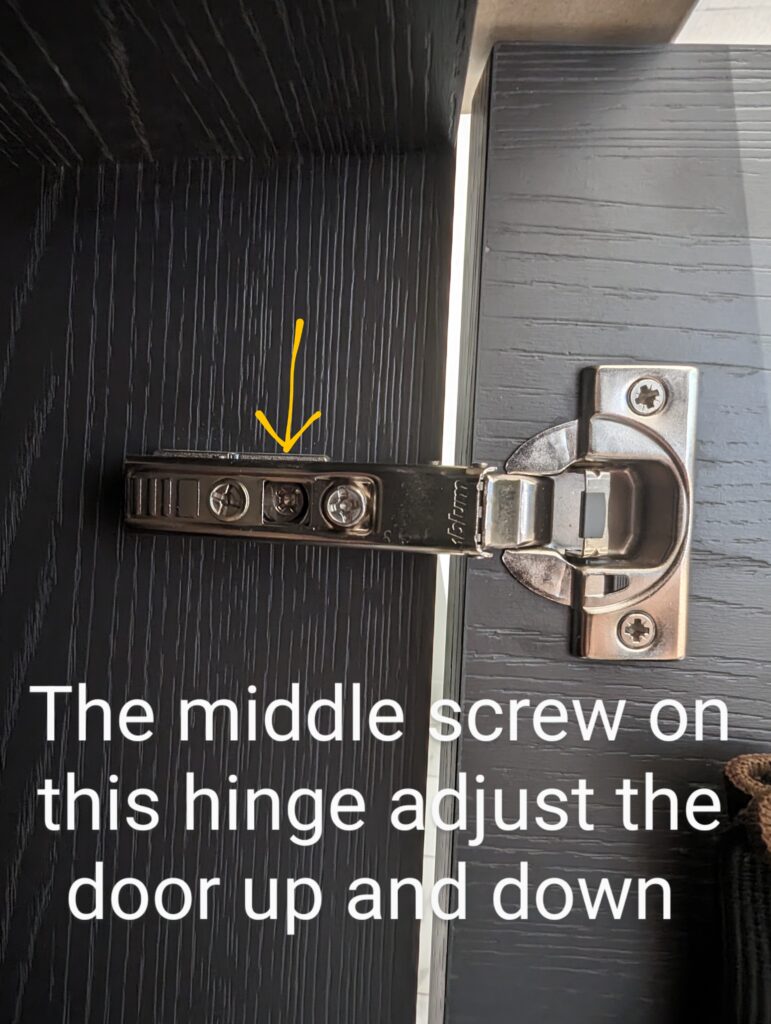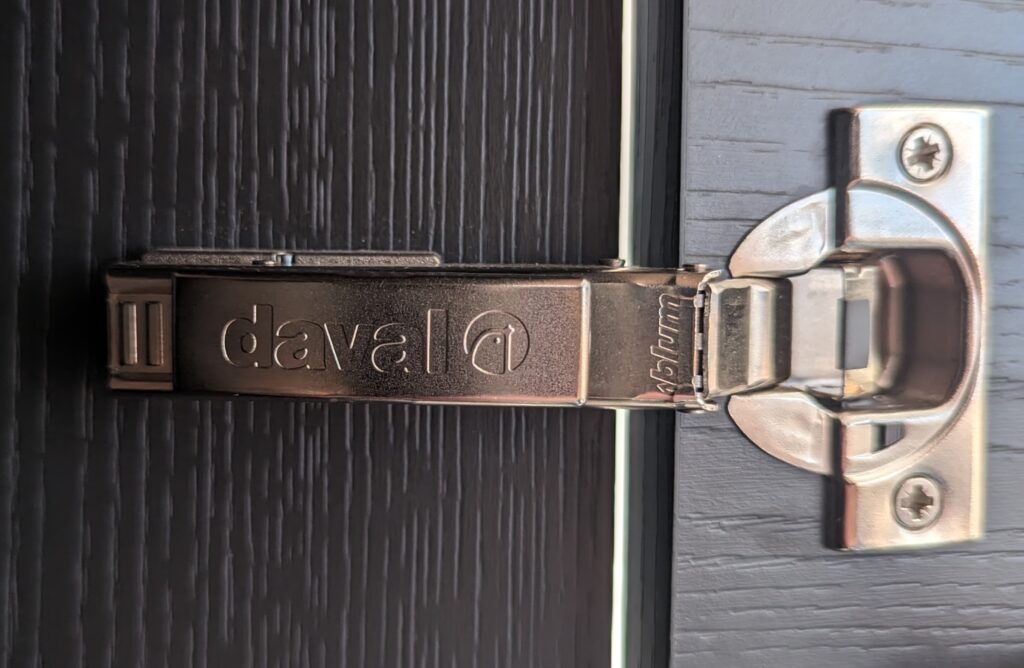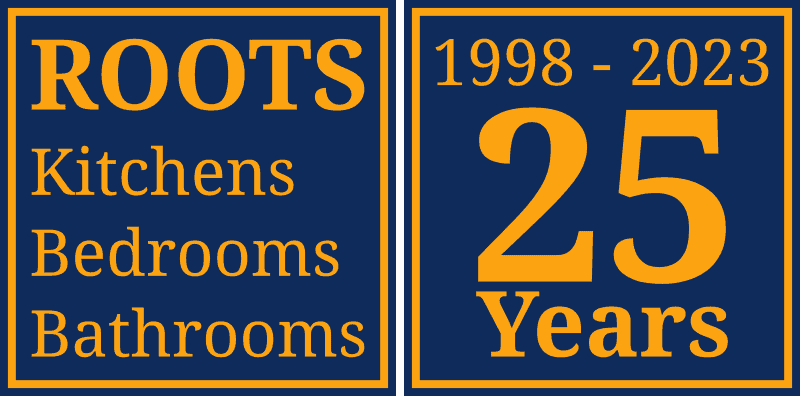A question was asked in the comment of my video “How to adjust a kitchen door hinge in less than 60 seconds“.

YouTube does not allow me to include images in replies, so this post is so I can share the answer with photos.
Concealed hinges allow door positions to be easily adjusted over time in three directions;
- up and down – to rise and lower the door vertically.
- left and right – to move the door nearer and further from the next door, useful if the doors are rubbing together.
- in and out – if the door is touching the cabinet at the top and not the bottom this allows precise adjustment.
Doors move over time for a number of reasons. Temperature and humidity changes are one example. Also when people push and pull the door in use, like using an open door for support as you get up from kneeling.
The hole between the two screws serves to purposes.
A) a location for an adjustment screw for a particular type of hinge
Some hinge base plates are minimalist and don’t have the screw above and below. Instead they fit front and back and those screws are covered by the hinge. To adjust up and down the hole allows access to a screw that is a cam that pushes the hinge up and down. One screw doing the job of two.

B) A location for accessories to fit
This hole is also used as a location for accessories. For example many manufacturers supply hinges with plates that cover the screws as an aesthetic and opportunity for displaying the manufacturers name.

